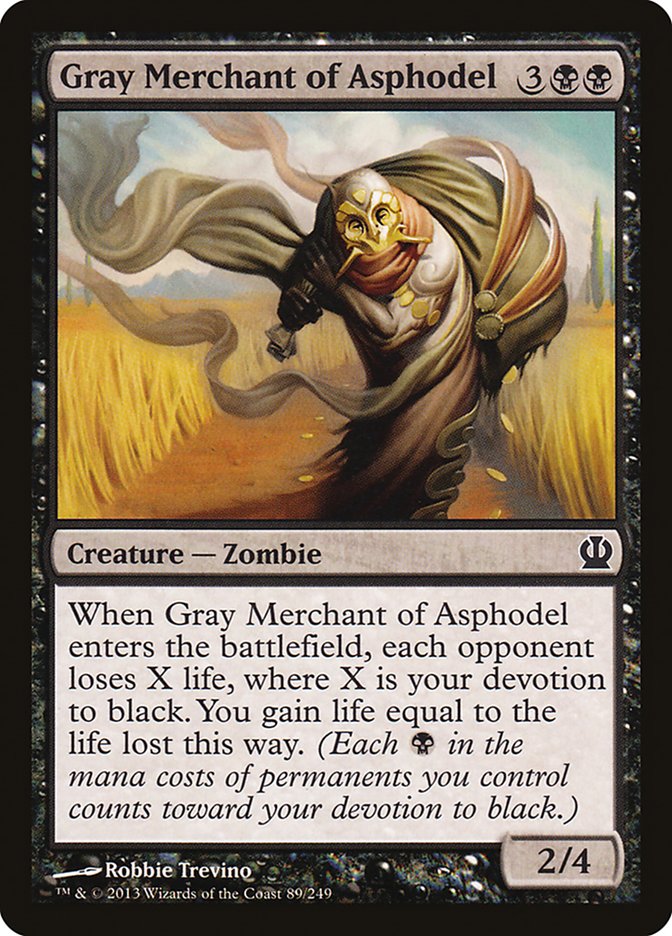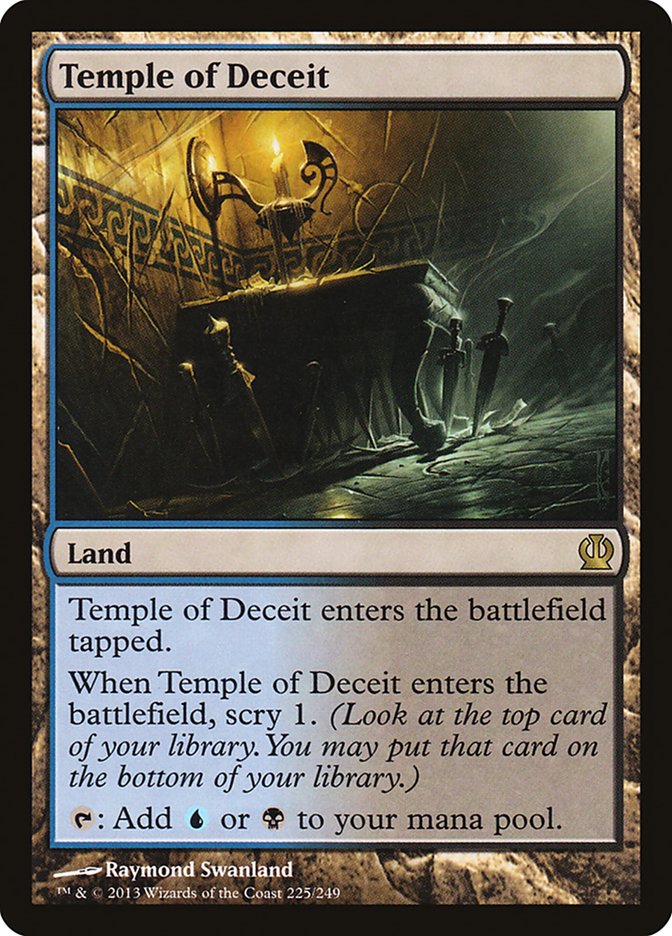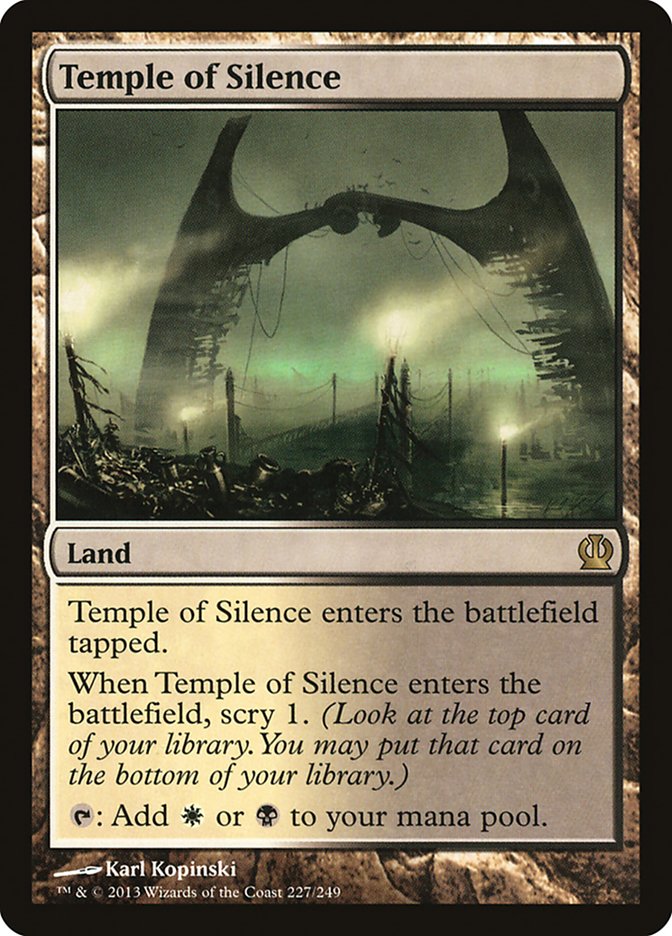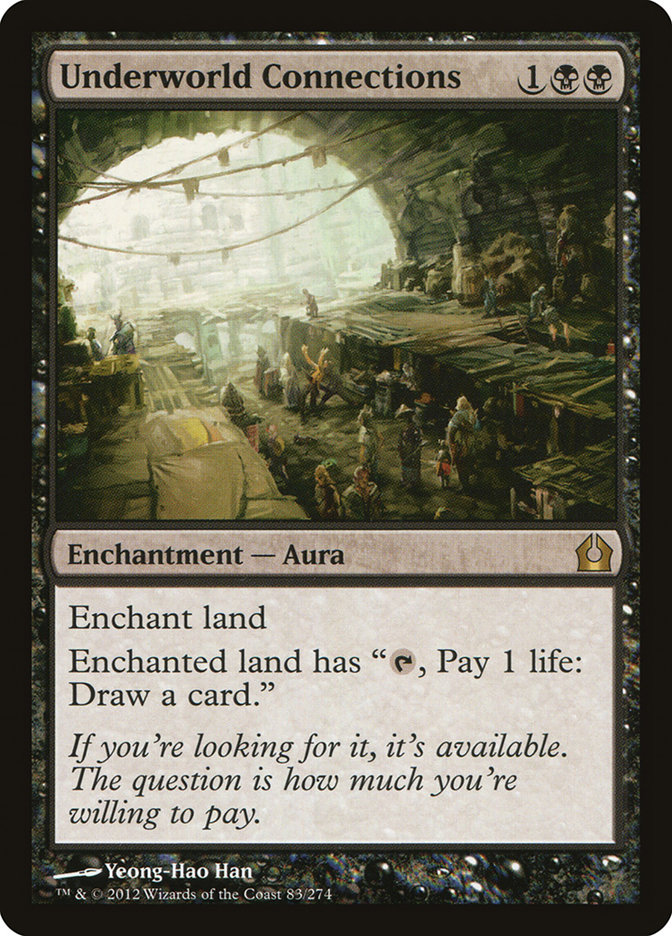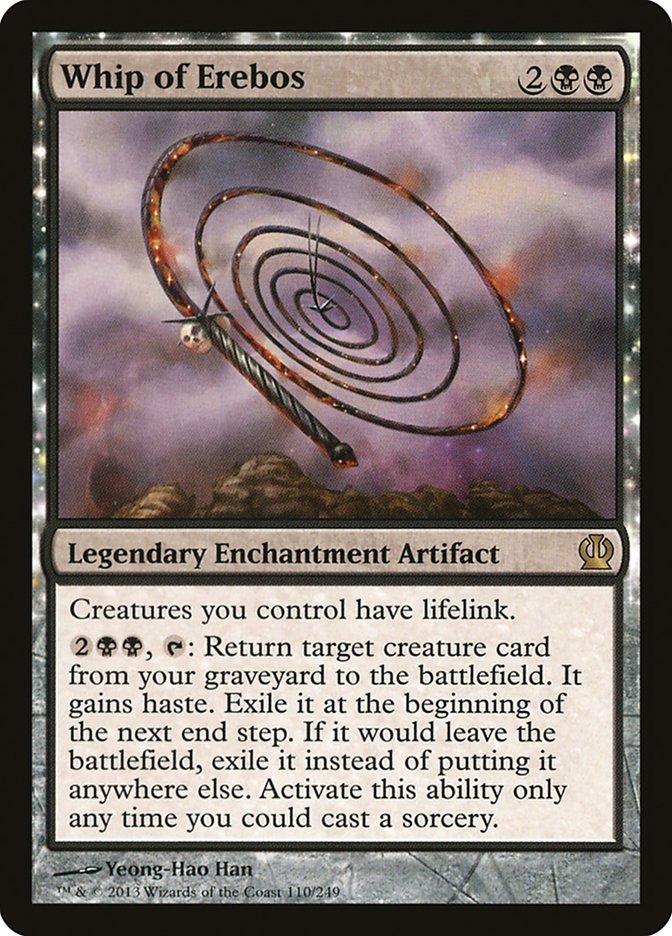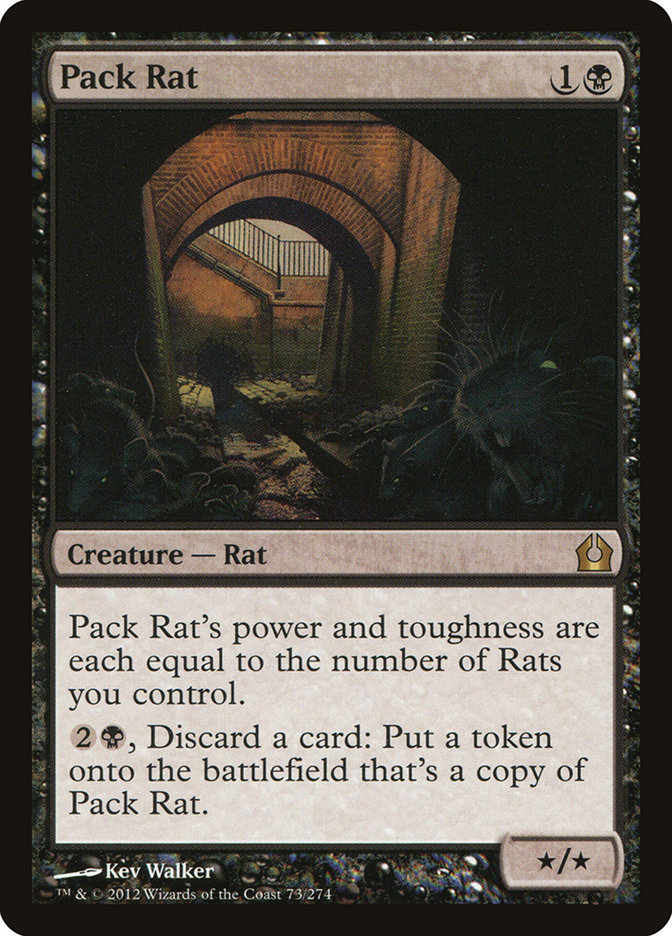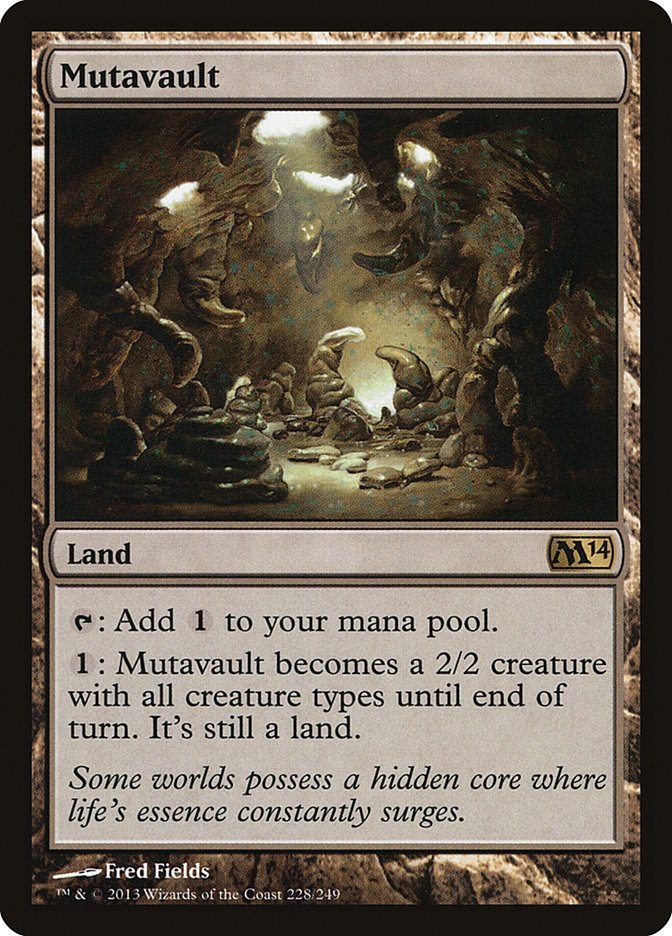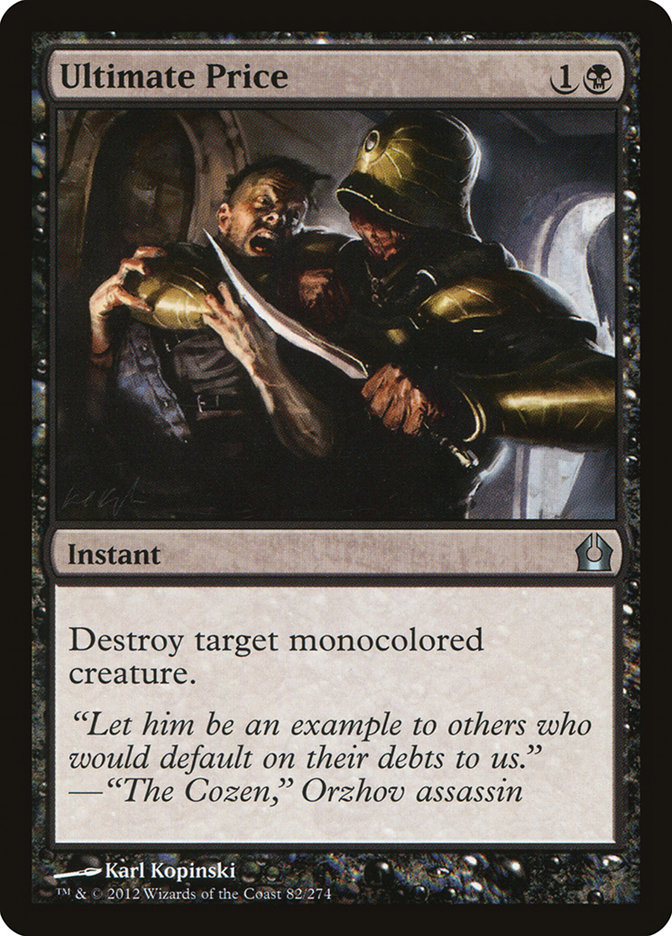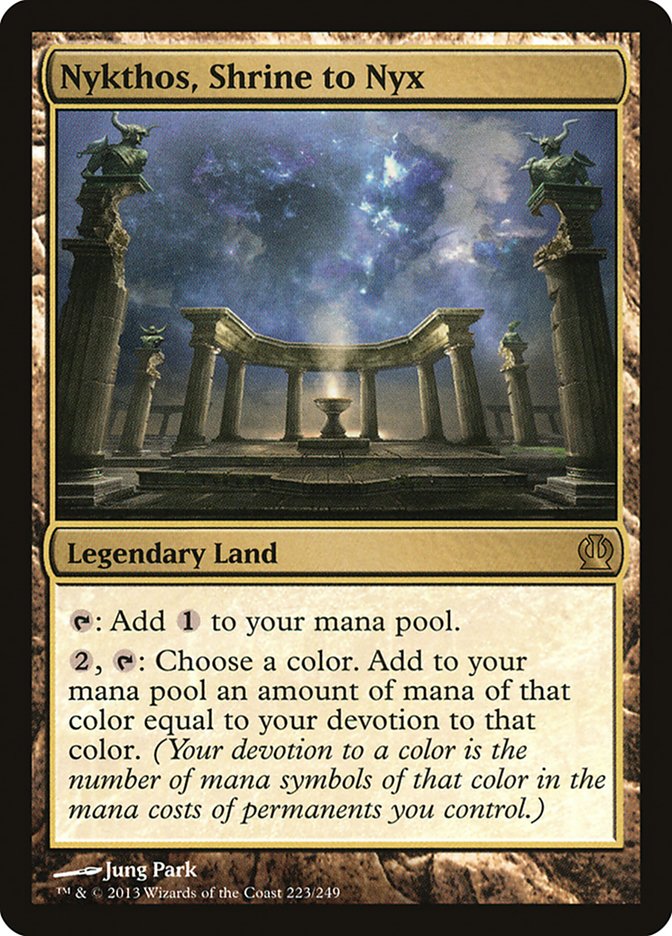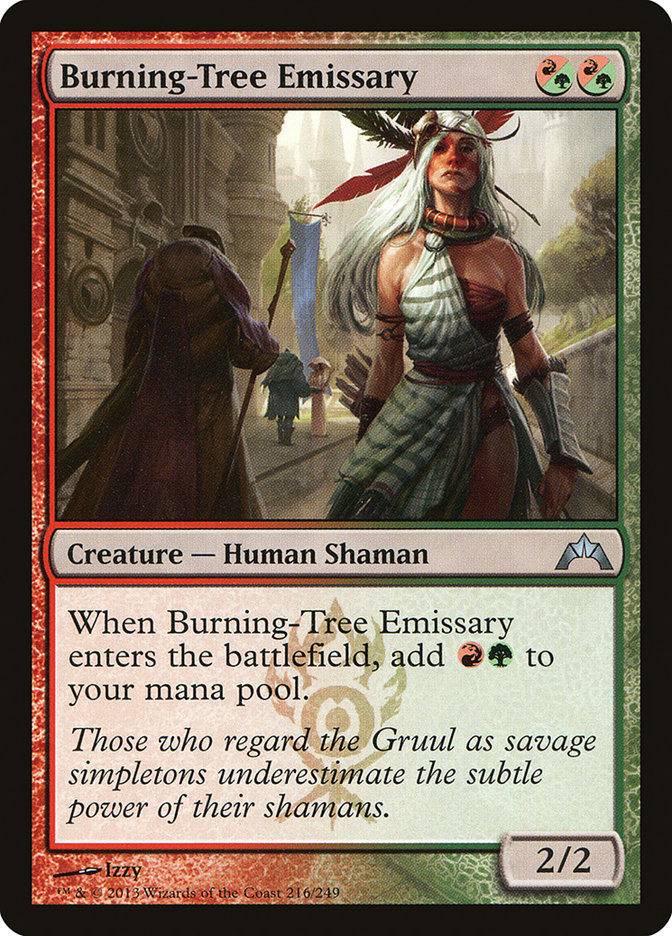Roll Tide Roll
This is not going to be an article about Master of Waves.
This is not going to be an article about Master of Waves.
This is not going to be . . .
You get the picture. Bart Simpson style, I need to just put baby in the corner and talk about something else. By the time you read this article, you should know that Mono-Blue Devotion is a deck. It is a real deck.
It is the best deck.
After placing three people in the Top 4 of Pro Tour Theros, it is likely that you will be facing off against Master of Waves quite a bit in the near future. For one, the card is bonkers and will singlehandedly win you more games than any other card in the deck. Thassa, God of the Sea will be a close second, but let’s be honest. Doesn’t it feel good to make tokens again? We have a new Cloudgoat Ranger, and I’m sure my editor Cedric Phillips is absolutely giddy about it. [Editor’s Note: I’m considering playing a blue deck in Seattle this weekend. *sigh*]
But since everyone is going to be talking about Master of Waves this week, I’m going to look at some of the other archetypes that breached the Top 8 and why they are also good. Additionally, I’m going to talk about how we can adapt to beat the new menace that is Master Blaster.
Back In Black
First up is a deck that I played in a Magic Online video earlier this week, which can be found here. If you want to take a look at how some of the games will play out or just get a better feel for the deck in general, go watch the videos. But before we get down and dirty, here is the decklist from the video, which is fairly close to the version that made Top 8 in the hands of Kentarou Yamamoto.
Creatures (15)
Lands (26)
Spells (19)
- 4 Thoughtseize
- 3 Underworld Connections
- 4 Ultimate Price
- 2 Devour Flesh
- 4 Hero's Downfall
- 2 Whip of Erebos
Sideboard

As you can see, the maindeck is only one card different, featuring an additional Nykthos, Shrine to Nyx instead of the fourth (!!!) Underworld Connections. There is a lot of synergy in this deck, which I absolutely love since you are actually building towards something. In the previous Standard format, you were dead set on just casting gigantic threats until your opponent died. Thragtusk and Thundermaw Hellkite were pretty major offenders, bottlenecking the format into a “go big or go home” situation. Most people went big, and it paid off. Now, as you can see from the Pro Tour, people are building decks around certain cards and interactions, and it is a welcome sight.
And oh my, what this deck can do to people.
At first glance, it doesn’t seem like this card would make all that big of an impact. In a vacuum, cards like this often seem bland and pretty weak, but every part of this deck hinges on one major goal: building your devotion to black. If you’re able to build up a large amount of devotion, Gray Merchant can often be lethal in one shot after just a few hits from Lifebane Zombie or Desecration Demon. And with so much removal in the deck, it isn’t all that hard to clear the way for your beaters to swing on through.
On one hand, Gray Merchant of Asphodel requires you to play a lot of permanents. When you are so reliant on removal spells against aggressive strategies, you can often dilute your overall permanent count and thus weaken the effect of your Gray Merchants. This is a problem that I have quite often against Mono-Red Aggro because many of your permanents are lackluster. Underworld Connections is a liability in a lot of scenarios against them, soaking up precious time and life points, while Lifebane Zombie rarely strips them of a creature and doesn’t block all that well.
On the other hand, Gray Merchant of Asphodel makes for some gigantic swings of life. I have played many games against strategies like G/W Aggro and Mono-Blue Devotion where I never trade off my creatures, attack with Lifebane Zombie a few times, and hit them with running Gray Merchants to effectively steal the game out from under them. A single Gray Merchant against most aggressive decks will virtually end the game simply because you are able to buy yourself enough time to find another one. The effects of all these creatures with devotion like Gray Merchant and Master of Waves are backbreaking, and the only way to stifle their productivity is to kill literally every creature that hits the board.
But this can be very difficult to do.
The inclusion of these in a mono-black deck gave me pause. Essentially, it is just a Swamp that comes into play tapped but allows you to scry. Since we aren’t focusing on actual Swamps in the deck with cards like Liliana of the Dark Realms and Corrupt, the only downside is that the land comes into play tapped, but how big of a deal is that?
Let me start by saying that mono-black can’t afford to stumble when hitting land drops early but also can’t really afford to flood out too badly in a number of matchups. Scry is actually pretty powerful in this archetype since you need lands early in the game but need to draw straight gas in the later turns to keep up with some of the ridiculous things going on. For that, is it worth playing four lands that come into play tapped? What about eight?
I’m not sure what the correct number here is, but I do know that the scry is a welcome addition to the mana base. There are so many games where you have to keep two lands with a Temple and just hope to get there—and usually do. If you opted for Swamp instead, many of those draws would miss a land early on, causing you to stumble slightly and get punished for it. When you have cards like Lifebane Zombie in your deck, it is important to cast it before your opponent actually gets to play their threat. This is especially true against Mono-Red Aggro by taking their Boros Reckoner before they get to turn 3.
The downside is that your land drop will come into play tapped on some occasions when you don’t want it to. Honestly, the tradeoff seems like it favors the scry, but I’ve had success with the deck while using only Swamps and now using Temple, so I’m a bit unsure where I stand on the issue. At the very least, it is making me consider playing a few Temples in other monocolored midrange decks just so I can scry, which is a concept that I didn’t think possible when the set was first spoiled.
Gerry Thompson and I actually talked about this quite a bit in the early days of testing with the set, and we kind of laughed at the idea. Now I question everything. If anything holds true from the Pro Tour, it is that not a single card in Standard can be completely disregarded and that we should be scouring constantly for improvements to our decks. Cards that seemed mediocre in the previous Standard format are potentially hidden gems, and there were plenty of those on the biggest stage of the game this past weekend.
Next up:
Mono-black is especially resilient to removal with Desecration Demon running around, as well as multiple other permanents that represent devotion without dying to Dreadbore. Underworld Connections and Whip of Erebos have been overperforming, giving you ways to build up your devotion without that pesky vulnerability to Supreme Verdict. On top of everything, they’re both fantastic at helping you grind out your opponent. The Phyrexian Arena effect of Underworld Connections is particularly tough for something like Esper Control to beat if they don’t have an immediate answer like Detention Sphere or a counterspell.
One thing I’ve learned from playing with this deck (and similar versions) over the last two-ish weeks is that Whip of Erebos is just as unbeatable in Constructed as it is in Limited. The card just wrecks anyone trying to race you and makes for some interesting interactions with Gray Merchant of Asphodel. The fact that they can basically never attack with a large creature into Whip and Gray Merchant is just absurd.
In the early weeks of testing with Theros, we focused a little too hard on the Reanimate aspect of Whip of Erebos and not nearly enough on the lifelink ability. Did you ever wonder why Vault of the Archangel was so good? I can tell you this—it wasn’t because of the deathtouch. The swings in life it could give you were absurd, and now we don’t even have to spend multiple turns activating it. Luckily, it also helps increase our devotion to black, fitting in perfectly with the theme.
While Whip isn’t entirely broken with Desecration Demon, it is particularly tough for aggro opponents to beat if the game goes for more than a turn or two after Whip hits the board. They’re going to run out of creatures eventually, and the high density of removal should slow them down long enough for you to eventually get in one crack, which is almost always more than enough. Some of the faster draws from Mono-Red Aggro can invalidate your Whip, but don’t be surprised to find it slowly dig you out of almost any hole. Control, midrange, aggro—all of these strategies will fall to the Whip given enough time.
This is certainly a cute interaction that I didn’t really think about until seeing it at the Pro Tour. Obviously, I can read the cards and see how they interact. Mutavault pumps all of your Rats. Cool. But Pack Rat? Seriously?
Seriously.
Not only do the tokens you create contain the oh-so-important aspect of having an actual 1B mana cost, but it gives you an outlet for excess lands when you’re drawing a ton of extras from Underworld Connections. Pack Rat can dominate the game against removal-light decks, much like it did in Return to Ravnica Limited. There are occasions when I will just move all in on Pack Rat if my opponent lets me create one additional copy. In a fair game of Magic where both sides are playing creatures, it is almost impossible to beat and requires something huge like Cyclonic Rift for them to get back in the game. But when you’re playing Thoughtseize alongside Duress in the sideboard, it makes it much more difficult for your opponent to do that.
On top of everything, Pack Rat is an absolute beating in most black-based matchups. If everyone sticks to Doom Blade in order to plaster the walls with Fleecemane Lion and the rest, then your Pack Rat will likely be able to create at least one copy before they have a chance to find a Hero’s Downfall. This will give you a huge advantage if you’re playing Ultimate Price where they’re playing Doom Blade, as you will have many more answers in the early turns of the game before it gets out of control.
Unfortunately for Pack Rat, cards like Detention Sphere and Ratchet Bomb are seeing a lot of play out of the control decks on top of Supreme Verdict. This means it won’t be so great against them, but you can bet the house that Pack Rat will singlehandedly smash any midrange deck you come across.
This card has been much stronger for me than I anticipated when comparing it to Doom Blade. There are a reasonable number of important creatures that Doom Blade kills that Ultimate Price doesn’t, but one thing is for certain—they are too similar to have dead cards against an opposing Desecration Demon. One of the easiest ways to fall behind in the mirror is your opponent slamming a Demon; you’ll then get smashed if your hand is full of Doom Blades instead of Hero’s Downfalls. You can’t always rely on having Downfall as your removal spell, but having Ultimate Price will make you much happier than if you didn’t.
Boros Reckoner and company have decent-sized targets on their head, but it feels pretty miserable to Doom Blade a Burning-Tree Emissary and the like. Yes, you may lose the occasional game because Ultimate Price didn’t kill something against an aggressive deck, but guess what? They still have plenty of relevant targets for Ultimate Price. The games you lose to Demon will be much more frustrating, and giving yourself a huge leg up in the mirror is always respectable. You can’t afford sideboard slots for Ultimate Price, so the switch seems rather natural.
There is the possibility that the influx of Devotion decks will cause a rise in hybrid creatures, making your Ultimate Price a bit awkward at times, but you will still have the best answer to Master of Waves, Polukranos, and every other gigantic monster in the format. When people start playing more Trostanis, then maybe . . . mayyyyybe I’ll switch back.
But probably not.
Nykthos Burning
Last week I wrote an article talking about a few different ways to abuse Nykthos, Shrine to Nyx. After playing with the card for just a short while, I was able to see just how good it could be. There were plenty of players on Magic Online and around the local shop that were brewing with it and doing outrageous things. I mean, I don’t know about you guys, but I wouldn’t have thought that Frostburn Weird would be a Standard staple until I saw it with my own eyes. Now I can’t think of any matchup with Mono-Blue Devotion where I don’t want one in my opening hand! My eyes have been opened, and I’ve done a complete 180* on how I evaluate cards in Standard now.
The variety of ways people are able to put Nykthos to use is staggering. From Sphinx’s Revelation to Garruk, Call of Beasts or even just activating Thassa enough times to make your entire team unblockable, Nykthos is gigantic. There are turns in Standard that are crazier than we’ve seen in a long time—and not necessarily in a bad way. Most of these decks rely on creatures to power their Nykthos, which creates a relative balance in the format. If you rely too much on Nykthos, you can just flood out with it and miss land drops. If your creatures die early on, then your turns in the midgame are much less spectacular.
This means that Nykthos is absurd against decks without consistent removal.
If you watched any coverage of the Pro Tour, you should have seen Makahito Mihara go ballistic a time or two with Nykthos, generating enough mana to cast Garruk, Call of Beasts (along with ten or so creatures) by turn 4! This kind of explosiveness is unheard of, but the draws are there, mostly thanks to a little guy we’ve seen before.
One of the poster children for devotion, Burning-Tree Emissary allows for some starts that are absolutely unbeatable (go figure). I have seen a start featuring turn 1 Elvish Mystic followed by Nykthos and double (or even triple) Burning-Tree Emissary, allowing you to cast cards like Kalonian Hydra on turn 2! You better hope you have a Doom Blade at the ready!
But the turns after the initial burst is where you start to pull ahead. Domri Rade and Garruk allow you to dig for more threats and just flood the board, giving your Nykthos quite a few points of devotion. This allows for Nylea, God of the Hunt and Polukranos, World Eater to do some serious damage, to say nothing of the fact that they actually have to deal with all your little guys first.
Nykthos was so powerful in Mihara’s deck that he even decided to play Voyaging Satyr, a creature that allowed him to Twiddle his Nykthos to do some truly wonderful things. At the very least, Voyaging Satyr acts as another mana accelerator, giving you more consistency with casting Polukranos on turn 3. It’s magnificent to say the least.
I’m a little disappointed his deck didn’t perform all that well in the semifinals, but I know what the deck can do and it isn’t something to ignore. Similarly, the Mono-Red Devotion decks allow for some monstrous turns with Stormbreath Dragon and even Ember Swallower. And the connecting force of these two decks is Burning-Tree Emissary. No other creature allows for faster starts in the format, and it is definitely something you need to keep in mind when preparing for these decks. If you can’t stall out their early threats with removal, you need to be able to keep the rest of their big baddies in check. This means more Pithing Needles, more Supreme Verdicts, and even more Ratchet Bombs (though that might even be too slow).
Louisville Bound
The truth is that I am absolutely in love with this format. It has been so long since I’ve been able to play a monocolored deck, and the fact that there are multiple different archetypes that are all clearly powerful has me excited for what’s to come! I’ll be heading to Louisville this weekend for the Standard Grand Prix, and I just can’t wait to play. I’m not dead set on any deck as of yet, but my front-runners are currently Mono-Black and Mono-Blue Devotion. Both are strong choices and have their weaknesses, but more importantly both are incredibly fun to play. I’ve been having a blast over the past two weeks playing with Theros on Magic Online, and I can’t wait to finally jam a live tournament. Hope to see you there!
Thanks for reading.
Todd Anderson
strong sad on Magic Online
@strong_sad on Twitter

